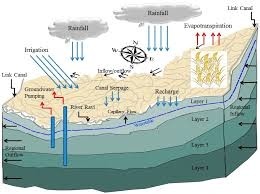We find Reliable groundwater supplies
Everyone asks this questions about this ...
I follow many blogs and chats about finding things in the ground; treasure, voids and groundwater. I've worked in many countries, heard all the stories. Everyone argues about what is the best way, use divining rods, use a local who "knows". It's always a long discussion about their successes and failures. I've personally been part of many heated discussions about this.. and many get so angry when their ideas are questioned. I know, some can appear to succeed with the black magic, personally I prefer the science, I can show the logic and the reason, the black magic is too much of a mystery for me. I'm giving you my recipe, you can ask me anything and I'll work with you to help.
I want to teach you, stop this being a gamble, a magic trick. I want to put some structure into this process... I've been here many times.. succeeded where others failed... This is not black magic --- its not a mystery --- here are some steps to follow... GOOD LUCK
Start number one step - ASK - what is required, locations, volume of water, what are the water quality requirements, what times of year do they require and how is it being used?
FIND OUT What are provincial or regional permitting and legal requirements
First - review geology, types of formations and what other wells in area.. needs a systematic approach.
Second - What is the possible target, depth and features, think what is the best way to find it, how is it different to what is around it?
Third - Using these ideas design a survey. Is geophysics needed ? Where do I drill, what else do I need to do?

Water well drilling Cmbodia
water well drilling

Then
- Do the field work
- Interpret
- Review geology and all information. satelite, geophysics
- Site test well fro town supply or irrigation
- Drill hole
- Test well yield by running pumping tests
- Review results and decide if this meets requirements
- Review all steps see if more wells required
- If a larger project may need an intensive study including computer models
Geological evaluation before any surveys or drilling

projects that will benefit from an ERI survey
- Alluvial formations that vary in gravel and sand content -- the ERI can find the area that has the highest resistivity and maximum percentage of sand and gravel - hence best yield and flows
- Old stream channels that vary in thickness and depth -- the ERI can find the deepest section that can deliver the highest yield
- Fractured rock systems that vary in fracturing -- the ERI will locate the most fractured best yielding zone
using the technology will save you money and increase your credibility
- by reducing numbers of test wells
- by improving your success ratios
- by using a professional approach

Locate site with ERI
Electrical Resistivity surveys

water well drilling
Drill well

Well testing

Well testing and validation

Well Testing involves measuring flow rates, pressures, and fluid properties (water) while water are being produced from the well. This data helps engineers understand the well's potential, the reservoir's properties, and potential issues. The wells are [umped, measurements includes water levels, flows, temperatures and chemistry. Analysis includes measuring permeability and porosity plus chemistry of the water This determines yield of the well(s) and sustainability of the aquifer flows.
Computer Models

